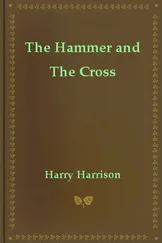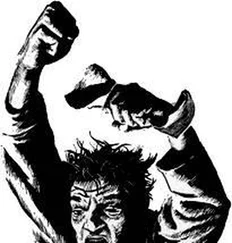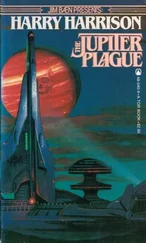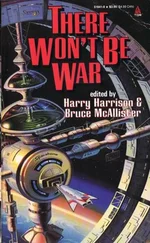Гарри Гаррисон - To The Stars
Здесь есть возможность читать онлайн «Гарри Гаррисон - To The Stars» весь текст электронной книги совершенно бесплатно (целиком полную версию без сокращений). В некоторых случаях можно слушать аудио, скачать через торрент в формате fb2 и присутствует краткое содержание. Жанр: Фантастика и фэнтези, на английском языке. Описание произведения, (предисловие) а так же отзывы посетителей доступны на портале библиотеки ЛибКат.
- Название:To The Stars
- Автор:
- Жанр:
- Год:неизвестен
- ISBN:нет данных
- Рейтинг книги:3 / 5. Голосов: 1
-
Избранное:Добавить в избранное
- Отзывы:
-
Ваша оценка:
- 60
- 1
- 2
- 3
- 4
- 5
To The Stars: краткое содержание, описание и аннотация
Предлагаем к чтению аннотацию, описание, краткое содержание или предисловие (зависит от того, что написал сам автор книги «To The Stars»). Если вы не нашли необходимую информацию о книге — напишите в комментариях, мы постараемся отыскать её.
To The Stars — читать онлайн бесплатно полную книгу (весь текст) целиком
Ниже представлен текст книги, разбитый по страницам. Система сохранения места последней прочитанной страницы, позволяет с удобством читать онлайн бесплатно книгу «To The Stars», без необходимости каждый раз заново искать на чём Вы остановились. Поставьте закладку, и сможете в любой момент перейти на страницу, на которой закончили чтение.
Интервал:
Закладка:
“You’re late.”
“Shut up, Hem, and just open the door.” He had very little respect for the Proctor Captain, who bullied those beneath him in rank, toadied to those above.
The meeting was just as demoralized as he had expected. Chun Taekeng, as Senior Elder, had the chair, and his constant hammering and screaming when he was ignored did nothing to help quiet things. There was cross talk and bitter denunciation, but nothing positive was being proposed. They were repeating the same words they had been using for over a month, getting no place. The time had come.
Jan walked forward, holding up his hand for attention, but was ignored by Chun. He walked closer still until he stood before the small man, looming over him. Chun waved him away angrily and tried to peer around him, but Jan did not move.
“Get out of here, back to your seat, that is an order.”
“I am going to speak. Shut them up.
The voices. were dying down, suddenly aware of him. Chun hammered loudly with the gavel, and this time there was silence.
“The Maintenance Captain will speak—” he called out, then threw the gavel down with disgust. Jan turned to face them.
“I am going to tell you some facts, facts you cannot argue with. First — the ships are late. Six weeks late. In all the years the ships have been coming, they have never been this late. Only once in all that time have they been more than four days late. The ships are late and we have used up all our time waiting. If we stay we burn. In the morning we must stop work and begin preparations for the trip.”
“The last corn in the fields!” someone shouted.
“Will be burned up. We leave it. We are late already. I ask our Trainmaster Ivan Semenov if this is not true.”
“What about the corn in the silos?” a voice called out, but Jan ignored that question for the moment. One step at a time.
“Well, Semenov?”
With reluctance the gray head nodded solemnly. “Yes, we must leave. We must leave to keep to our schedule.”
“There it is. The ships are late, and if we wait any longer we will die waiting. We must begin the trip south, and hope they will be waiting for us when we get to Southland. It is all we can do. We must leave at once, and we must take the corn with us.”
There was stunned silence. Someone laughed briefly, then shut up. This was a new idea, and they were only confused by new ideas.
“It is impossible,” The Hradil finally said, and many heads nodded in agreement. Jan looked at the angular face and thin lips of the leader of Alzbeta’s family, and kept his voice toneless and flat so his hatred of her would not show.
“It is possible. You are an old woman who knows nothing of these matters. I am a captain in the service of science and I tell you it can be done. I have the figures. If we limit our living space during the trip we can carry almost a fifth of the corn with us. We can then empty the trains and return. If we go fast, this can be done. The empty trains will be able to carry two-fifths of the corn. The rest will burn — but we will have saved almost two-thirds of the crop. When the ships come they must have the food. People will be starving. We will have it for them.”
They found their voices and shouted questions at him and at each other, derision and anger on all sides, with the gavel banging unnoticed. He turned his back and ignored them. They would have to talk it out, walk around the new idea and spit on it a bit. They were reactionary, stubborn peasants, and they hated anything new. When they quieted down he would speak to them, now he kept his back turned and ignored them, looking at the great map of the planet that hung from the dome, the only decoration in the big hall.
Halvmork, that’s what the first discovery team had called it. Twilight, the twilight world. Its name in the catalogues was officially Beta Aurigae III, the third planet out and the only one that was habitable of the six worlds that circled the fiercely hot blue-and-white star. Or barely habitable. For this planet was an anomaly, something very interesting to the astronomers who had studied it and entered the facts into their records, and passed on. It was the great axial tilt of the world that made it so fascinating to the scientists, almost habitable to the people who lived there. The axial tilt of forty-one degrees and the long, flattened ellipse of the orbit created a most singular situation. Earth had an axial tilt of only a few degrees, and that was enough to cause the great change in the seasons. The axis is the line about which a planet revolves; the axial tilt the degree that the axis deviates from the vertical. Forty-one degrees is a very dramatic deviation, and this, combined with the long ellipse of its orbit, produced some very unusual results.
Winter and summer were each four Earth years long. For four long years there was darkness at the winter pole, the planetary pole that faced away from the sun. This ended, suddenly and drastically, when the planet turned the brief curve at one end of the elliptical orbit and summer came to the winter pole. The climatic differences were brutal and dramatic as the winter pole became the summer one, to lie exposed to sun for four years, as it had done to the winter darkness.
While in between the poles, from 40 degrees north to 40 degrees south, there was endless burning summer. The temperature at the equator stayed above 200 degrees most of the time. At the winter pole the temperature remained in the thirties and there was even an occasional frost. In the extremes of temperature of this deadly planet there was only one place where men could live comfortably. The twilight zone. The only habitable place on Halvmork was this zone around the winter pole. Here the temperature varied only slightly, between 70 degrees and 80 degrees, and men could live and crops could grow. Wonderful, mutated crops, enough to feed a half-dozen crowded planets. Atomic-powered desalination plants supplied the water, turning the chemicals from the rich sea into fertilizer. The terrestrial plants had no enemies, because all the native life on the planet was based on copper compounds, not carbon. Each flesh was poison to the other. Nor could the copper based plant life compete for physical space with the faster growing, more energetic carbon forms. They were squeezed out, eliminated — and the crops grew. Crops adapted to the constant, muted, unending light, and unchanging temperature. They grew and grew and grew.
For four years, until the summer came and the burning sun rose above the horizon and made life impossible again. But when summer arrived at one hemisphere, winter fell in the other and there was another habitable twilight zone at the opposite pole. Then it would be possible to farm the other hemisphere for four years, until the seasons changed again.
The planet was basically very productive once the water and the fertilizer were supplied. The local plant life presented no problems. The Earth’s economy was such that getting settlers was no problem either. With the FTL drive, transportation costs were reasonable. When the sums had been carefully done and checked it was clear that food crops could be produced most reasonably, and transported cheaply to the nearest inhabited worlds, while the entire operation was designed to show a handsome profit as well. It could be done. Even the gravity was very close to Earth norm, for while Halvmork was larger than Earth it was not nearly as dense. Everything was very possible. There were even two large land masses around the poles that contained the needed twilight zones. They could be farmed turn and turn about, for four years each. It could be done.
Except how did you get your farmers and equipment from zone td zone every four years? A distance of nearly twenty-seven thousand kilometers?
Читать дальшеИнтервал:
Закладка:
Похожие книги на «To The Stars»
Представляем Вашему вниманию похожие книги на «To The Stars» списком для выбора. Мы отобрали схожую по названию и смыслу литературу в надежде предоставить читателям больше вариантов отыскать новые, интересные, ещё непрочитанные произведения.
Обсуждение, отзывы о книге «To The Stars» и просто собственные мнения читателей. Оставьте ваши комментарии, напишите, что Вы думаете о произведении, его смысле или главных героях. Укажите что конкретно понравилось, а что нет, и почему Вы так считаете.

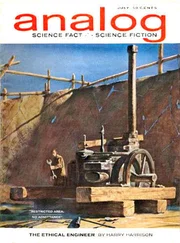
![Гарри Гаррисон - Bill, the Galactic Hero [= The Starsloggers]](/books/87536/garri-garrison-bill-the-galactic-hero-the-star-thumb.webp)

